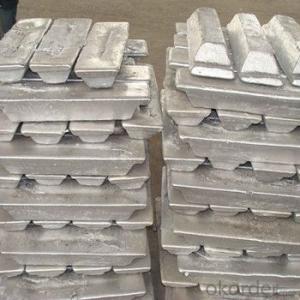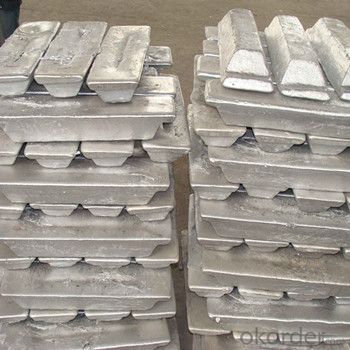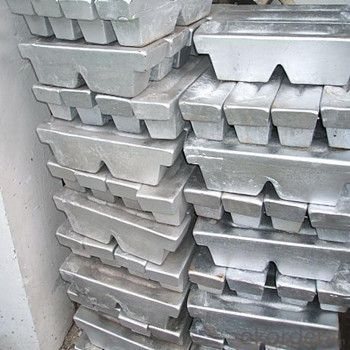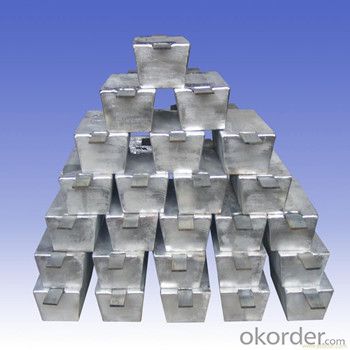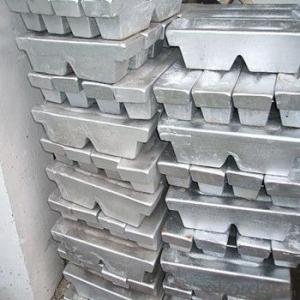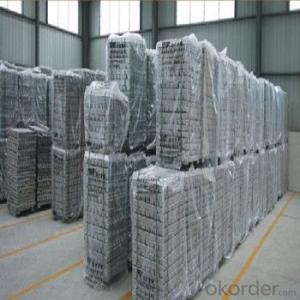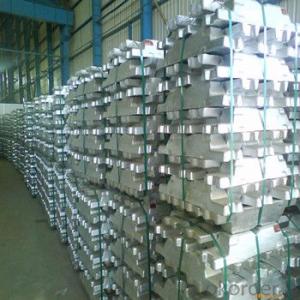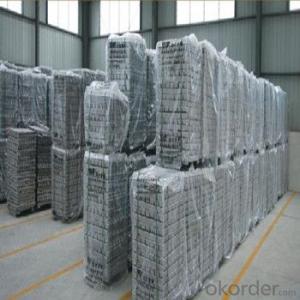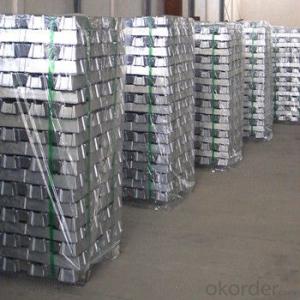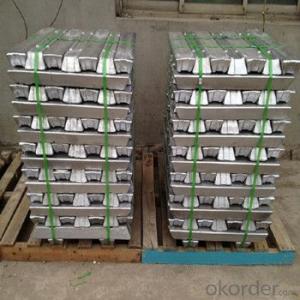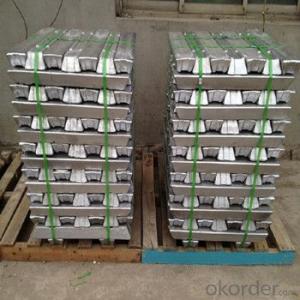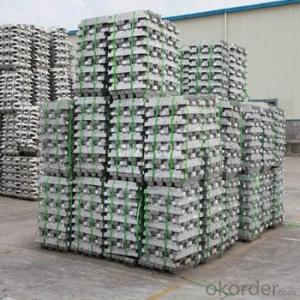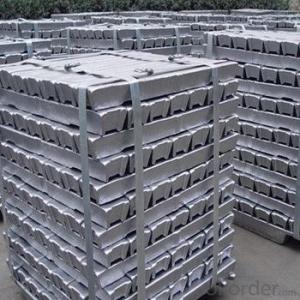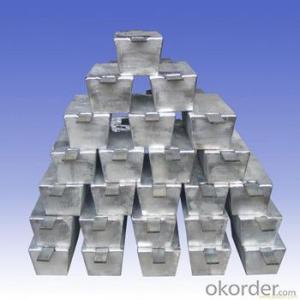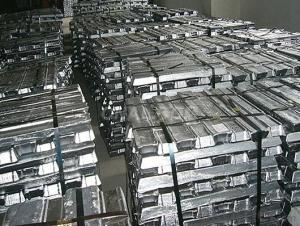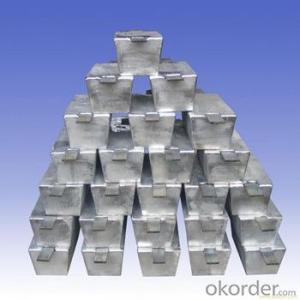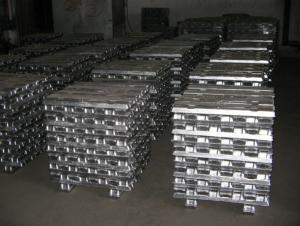Aluminum Ingot With High Purity 99.7% 99.9% With Best Price
- Loading Port:
- China main port
- Payment Terms:
- TT OR LC
- Min Order Qty:
- 1000 m.t
- Supply Capability:
- 10000 m.t/month
OKorder Service Pledge
OKorder Financial Service
You Might Also Like
Pure Aluminum Ingot Used for Industry
1.Structure of Aluminum Ingot Description
An ingot is a piece of material, usually metal, that is cast into a shape suitable for further processing. Insteelmaking, it is the first step among semi-finished casting products. Ingots usually require a second procedure of shaping, such as cold/hot working, cutting, or milling to produce a useful final product. Non-metallic and semiconductor materials prepared in bulk form may also be referred to as ingots, particularly when cast by mold based methods.
2.Main Features of the Aluminum Ingot
•High Purity
•High strength
•Fast melting
•Best price
•Good after-service
3. Aluminum Ingot Images

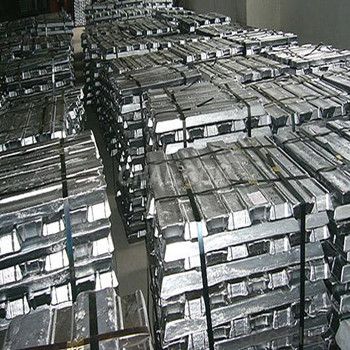
4. Aluminum Ingot Specification
Grade | Chemical Composition % | |||||||||
Al≥ | impurities ≤ | |||||||||
Si | Fe | Cu | Ga | Mg | Zn | Mn | others | Sum | ||
Al99.9 | 99.90 | 0.50 | 0.07 | 0.005 | 0.02 | 0.01 | 0.025 | - | 0.010 | 0.10 |
Al99.85 | 99.85 | 0.80 | 0.12 | 0.005 | 0.03 | 0.02 | 0.030 | - | 0.015 | 0.15 |
Al99.7 | 99.70 | 0.10 | 0.20 | 0.010 | 0.03 | 0.02 | 0.030 | - | 0.030 | 0.30 |
Al99.6 | 99.60 | 0.16 | 0.25 | 0.010 | 0.03 | 0.03 | 0.030 | - | 0.030 | 0.40 |
Al99.5 | 99.50 | 0.22 | 0.30 | 0.020 | 0.03 | 0.05 | 0.050 | - | 0.030 | 0.50 |
Al99.00 | 99.00 | 0.42 | 0.50 | 0.020 | 0.03 | 0.05 | 0.050 | - | 0.050 | 1.00 |
5.FAQ of Aluminum Ingot
We have organized several common questions for our clients,may help you sincerely:
①How about your company?
A world class manufacturer & supplier of castings forging in carbon steel and alloy steel,is one of the large-scale professional investment casting production bases in China,consisting of both casting foundry forging and machining factory. Annually more than 8000 tons Precision casting and forging parts are exported to markets in Europe,America and Japan. OEM casting and forging service available according to customer’s requirements.
②How to guarantee the quality of the products?
We have established the international advanced quality management system,every link from raw material to final product we have strict quality test;We resolutely put an end to unqualified products flowing into the market. At the same time, we will provide necessary follow-up service assurance.
③How long can we receive the product after purchase?
In the purchase of product within three working days, We will arrange the factory delivery as soon as possible. The pecific time of receiving is related to the state and position of customers.Commonly 7 to 10 working days can be served.
- Q: What are the different coating processes for aluminum ingots?
- Aluminum ingots can undergo various coating processes to improve their surface properties and protect against corrosion and environmental factors. Some commonly used coating processes for aluminum ingots include the following: 1. Anodizing: An electrochemical process is utilized to create an oxide layer on the ingot's surface. Anodizing not only provides excellent corrosion resistance but also allows for the application of dyes or paints to enhance the ingots' appearance. 2. Powder coating: Dry powder is applied to the ingot's surface and heated, resulting in the powder melting and forming a protective coating. This coating offers durability, aesthetic appeal, and resistance against corrosion, UV radiation, and chemicals. 3. Electrophoretic coating: Aluminum ingots are immersed in a paint solution that is electrically charged. The paint particles migrate to and deposit on the ingot's surface due to the electric field. Electrophoretic coatings provide excellent adhesion, corrosion resistance, and uniform coverage. 4. Chemical conversion coating: Aluminum ingots are treated with a chemical solution that reacts with the surface to create a protective coating. Common chemical conversion coatings include chromate, phosphate, and chromate-phosphate coatings. These coatings offer corrosion resistance and can serve as a base for paint or other decorative finishes. 5. Thermal spraying: A coating material, in the form of powders, wires, or rods, is heated and sprayed onto the ingot's surface. Thermal spraying results in a strong and durable coating that protects against wear, corrosion, and high temperatures. 6. Organic coatings: Liquid paints or lacquers are applied to the ingot's surface as organic coatings. These coatings provide a decorative finish and protect against corrosion and weathering. They are commonly used when aesthetics are a significant consideration. The choice of coating process depends on the specific requirements of the aluminum ingots and their intended application. Each process has its own advantages and disadvantages.
- Q: What are the different forging techniques for aluminum ingots?
- Some of the different forging techniques for aluminum ingots include open-die forging, closed-die forging, and ring rolling. In open-die forging, the aluminum ingot is placed between two flat dies and compressed to shape it. Closed-die forging involves using shaped dies to create intricate and precise shapes. Ring rolling is a specialized technique where the ingot is rolled into a ring shape using radial and axial forces. These techniques allow for the production of a wide range of aluminum products with varying shapes and sizes.
- Q: REGAL-S33N what is the aluminum ingot material?
- Aluminum, our daily industrial raw materials called aluminum ingot, according to the national standard (GB/T1196-93) should be called "remelting with aluminum ingot", but we are used to "aluminum ingot"". It is with the alumina cryolite produced by electrolysis.
- Q: How are aluminum ingots used in the production of modular buildings?
- Aluminum ingots are used in the production of modular buildings as they are melted and formed into various structural components such as beams, columns, and panels. These ingots are particularly beneficial due to their lightweight yet strong nature, making them ideal for constructing durable and easily transportable modular buildings. Additionally, aluminum's resistance to corrosion ensures the longevity and low maintenance of the structures.
- Q: What industries use aluminum ingots?
- The industries that commonly use aluminum ingots include automotive, aerospace, construction, packaging, and electrical industries.
- Q: Now refining aluminum ingot profits? What are the main factories?
- In general, the main customers are made of raw materials for the recycled aluminum plant. The price depends mainly on the composition and physical quality. This equipment is like a house to buy equipment and then to their masonry, generally dug a hole 2 meters deep, the pot material has 2 kinds, one kind is graphite, a cast iron, graphite is relatively better, Zhejiang has Yongkang sell, including tools, and this process is originated in the then, if you want to do better to the study, to be able to please the master.
- Q: What are the different extrusion processes for aluminum ingots?
- Aluminum ingots can undergo various extrusion processes, each with distinct characteristics and applications. Some commonly employed methods for aluminum extrusion are: 1. The most widely used process for aluminum ingots is direct extrusion. It involves heating the ingot and pushing it through a die using a ram or hydraulic press. The material flows in the same direction as the ram, resulting in a continuous profile with a consistent cross-section. 2. Indirect extrusion, on the other hand, utilizes a stationary die and a hollow ram to force the ingot through the die. The material flows in the opposite direction of the ram, resulting in a profile with superior surface finish and improved mechanical properties. 3. Impact extrusion is employed to create hollow shapes like tubes or containers. It entails striking a punch against the ingot, causing the metal to flow around the punch and form the desired shape. Impact extrusion is ideal for high-volume production of small parts. 4. Unlike the aforementioned processes that involve heating, cold extrusion is conducted at room temperature. The ingot is placed in a die and compressed using a hydraulic press or mechanical force. Cold extrusion is particularly useful for producing intricate shapes with precise tolerances and excellent surface finish. 5. Hydrostatic extrusion necessitates placing the ingot in a sealed chamber filled with a liquid, typically oil or water. Pressure is exerted on the liquid, which then applies even pressure on the ingot. This method is often employed for extruding alloys with low ductility or complex shapes. Each extrusion process presents its own advantages and limitations, and the choice depends on factors such as the desired product shape, material properties, production volume, and cost considerations.
- Q: Want to melt the cans into aluminium ingots, but what about iron cans?
- Aluminum is the third largest in the earth's crust, second only to oxygen and silicon, and is the most abundant metal element in the earth's crust. The development of the three important industries, aviation, architecture and automobile, requires that the material characteristics have the unique properties of aluminum and its alloys, which will greatly benefit the production and application of the new metal aluminum. Applications are very extensive.
- Q: Can aluminum ingots be used in 3D printing?
- Yes, aluminum ingots can be used in 3D printing. Aluminum is a commonly used material in additive manufacturing processes such as selective laser melting (SLM) or direct metal laser sintering (DMLS). By melting the aluminum ingots and layering it in a precise manner, it is possible to create complex and durable 3D printed metal parts.
- Q: What are the advantages of using aluminum ingots in electrical applications?
- There are several advantages of using aluminum ingots in electrical applications. Firstly, aluminum is a lightweight metal, which makes it easier to handle and transport. Secondly, aluminum has excellent conductivity properties, allowing it to efficiently carry electrical current. Additionally, aluminum ingots are highly resistant to corrosion, making them durable and long-lasting in electrical applications. Lastly, aluminum is a cost-effective material compared to other metals, which makes it a more economical choice for electrical components.
Send your message to us
Aluminum Ingot With High Purity 99.7% 99.9% With Best Price
- Loading Port:
- China main port
- Payment Terms:
- TT OR LC
- Min Order Qty:
- 1000 m.t
- Supply Capability:
- 10000 m.t/month
OKorder Service Pledge
OKorder Financial Service
Similar products
Hot products
Hot Searches
Related keywords
